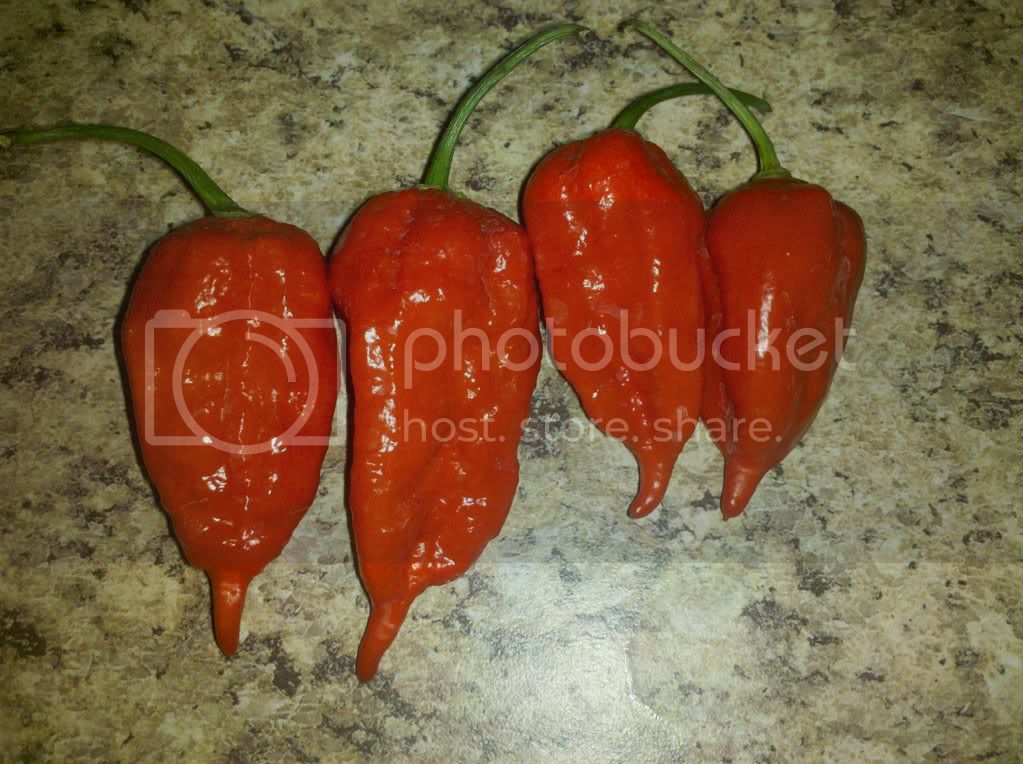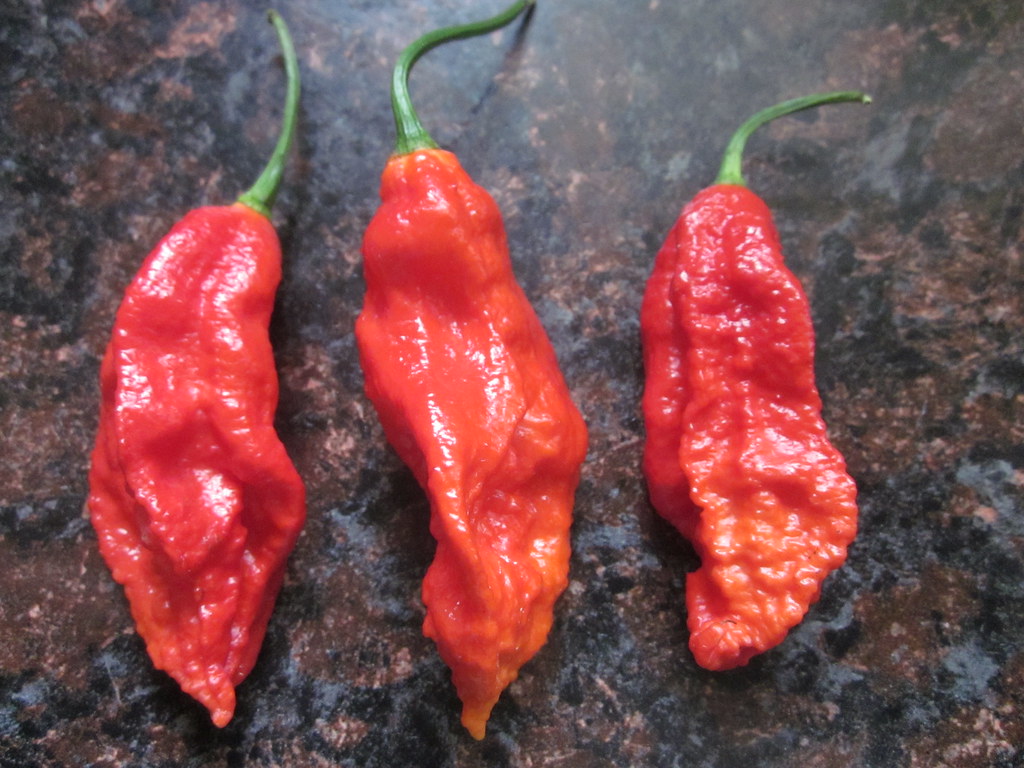I know it's not particularly strange or rare for bhut jolokias to have stingers, but I have a plant that seems to uniformly produce pods with pretty marked stingers. Has anyone had this before?

There are about ~15 full sized pods on the plant and every one has a nice little stinger on it as far as I can tell. I thought they were pretty cool looking, so I'm going to save some separate seed from this plant.

There are about ~15 full sized pods on the plant and every one has a nice little stinger on it as far as I can tell. I thought they were pretty cool looking, so I'm going to save some separate seed from this plant.


